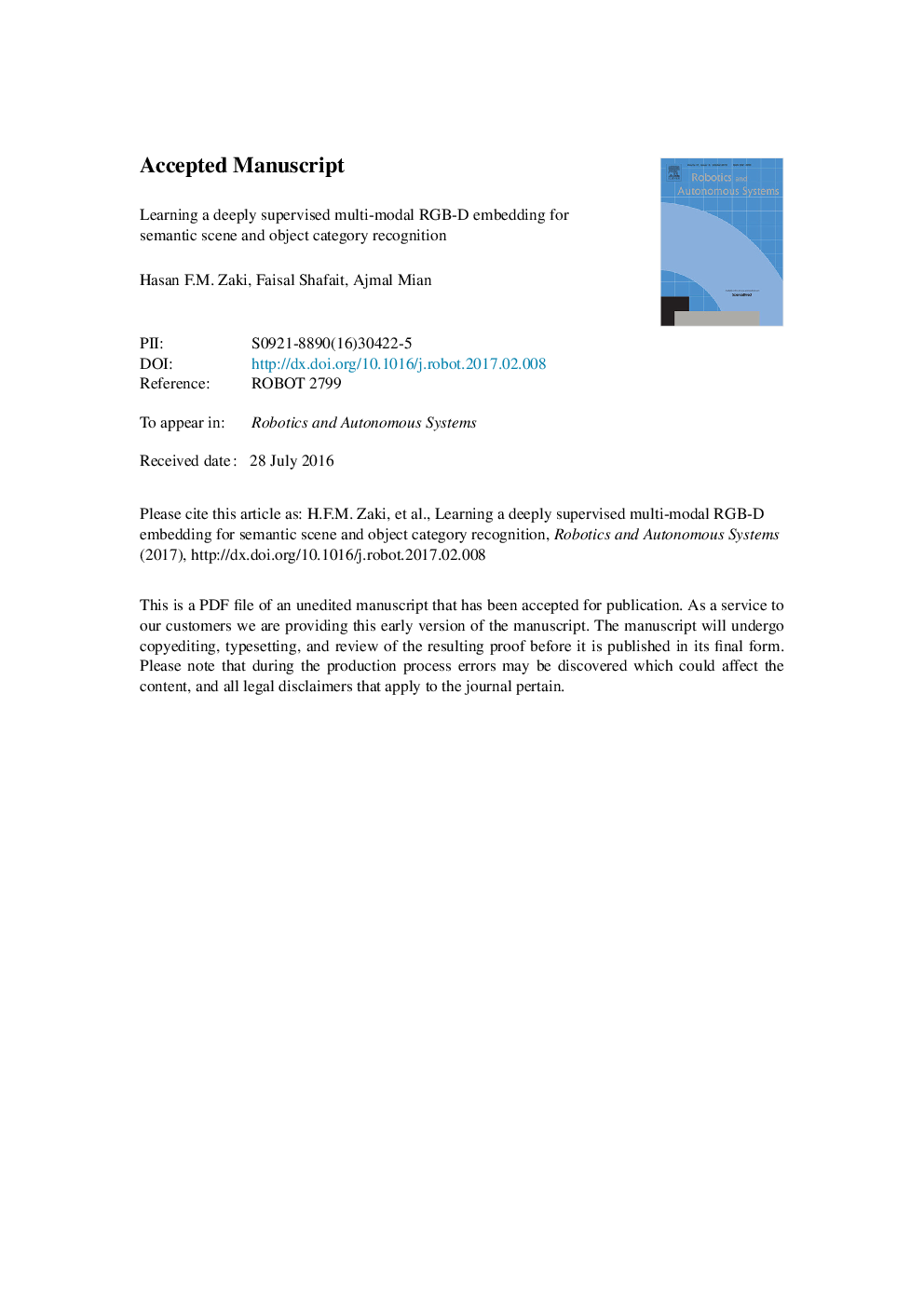| Article ID | Journal | Published Year | Pages | File Type |
|---|---|---|---|---|
| 4948715 | Robotics and Autonomous Systems | 2017 | 40 Pages |
Abstract
Recognizing semantic category of objects and scenes captured using vision-based sensors is a challenging yet essential capability for mobile robots and UAVs to perform high-level tasks such as long-term autonomous navigation. However, extracting discriminative features from multi-modal inputs, such as RGB-D images, in a unified manner is non-trivial given the heterogeneous nature of the modalities. We propose a deep network which seeks to construct a joint and shared multi-modal representation through bilinearly combining the convolutional neural network (CNN) streams of the RGB and depth channels. This technique motivates bilateral transfer learning between the modalities by taking the outer product of each feature extractor output. Furthermore, we devise a technique for multi-scale feature abstraction using deeply supervised branches which are connected to all convolutional layers of the multi-stream CNN. We show that end-to-end learning of the network is feasible even with a limited amount of training data and the trained network generalizes across different datasets and applications. Experimental evaluations on benchmark RGB-D object and scene categorization datasets show that the proposed technique consistently outperforms state-of-the-art algorithms.
Related Topics
Physical Sciences and Engineering
Computer Science
Artificial Intelligence
Authors
Hasan F.M. Zaki, Faisal Shafait, Ajmal Mian,
